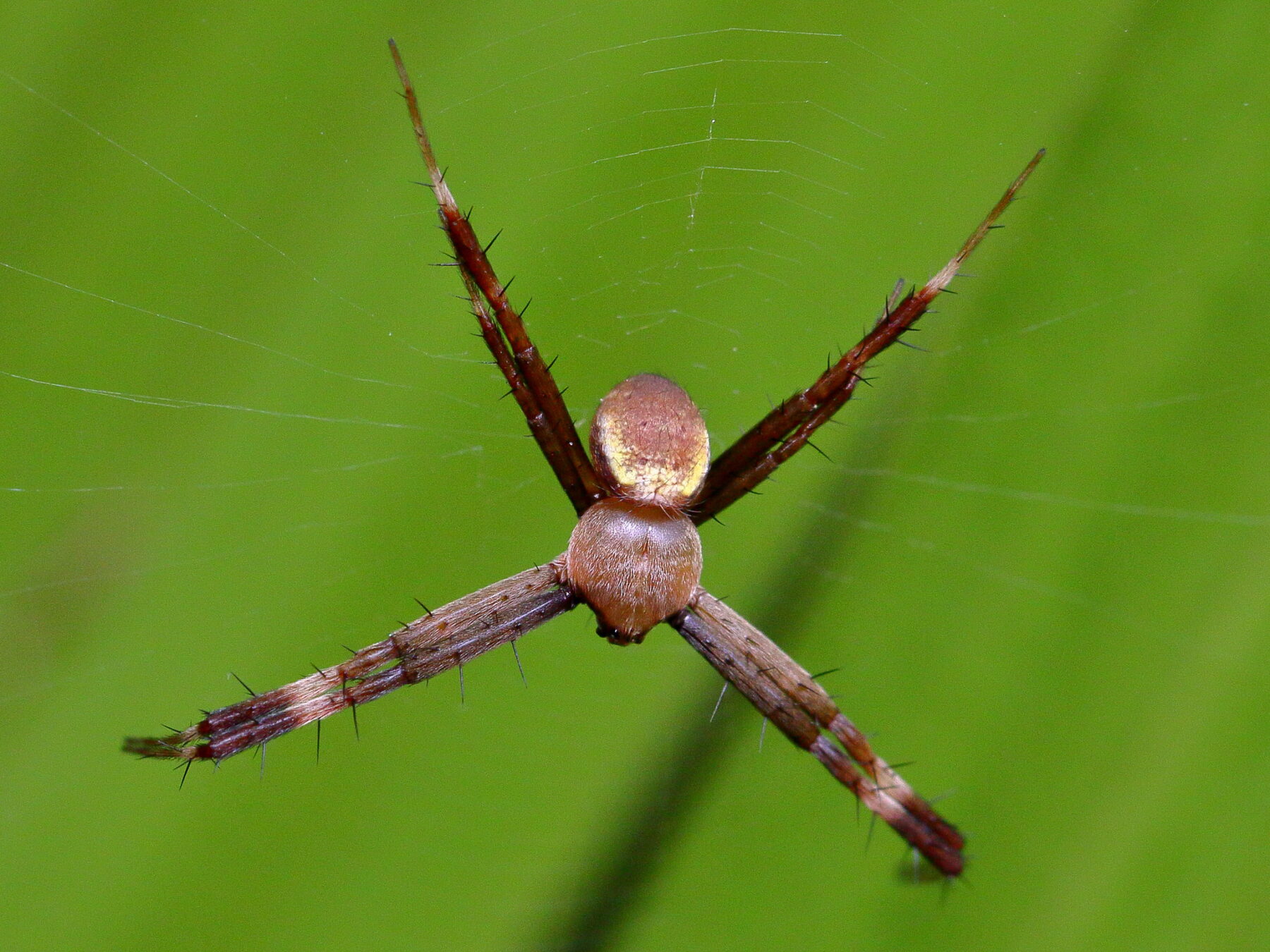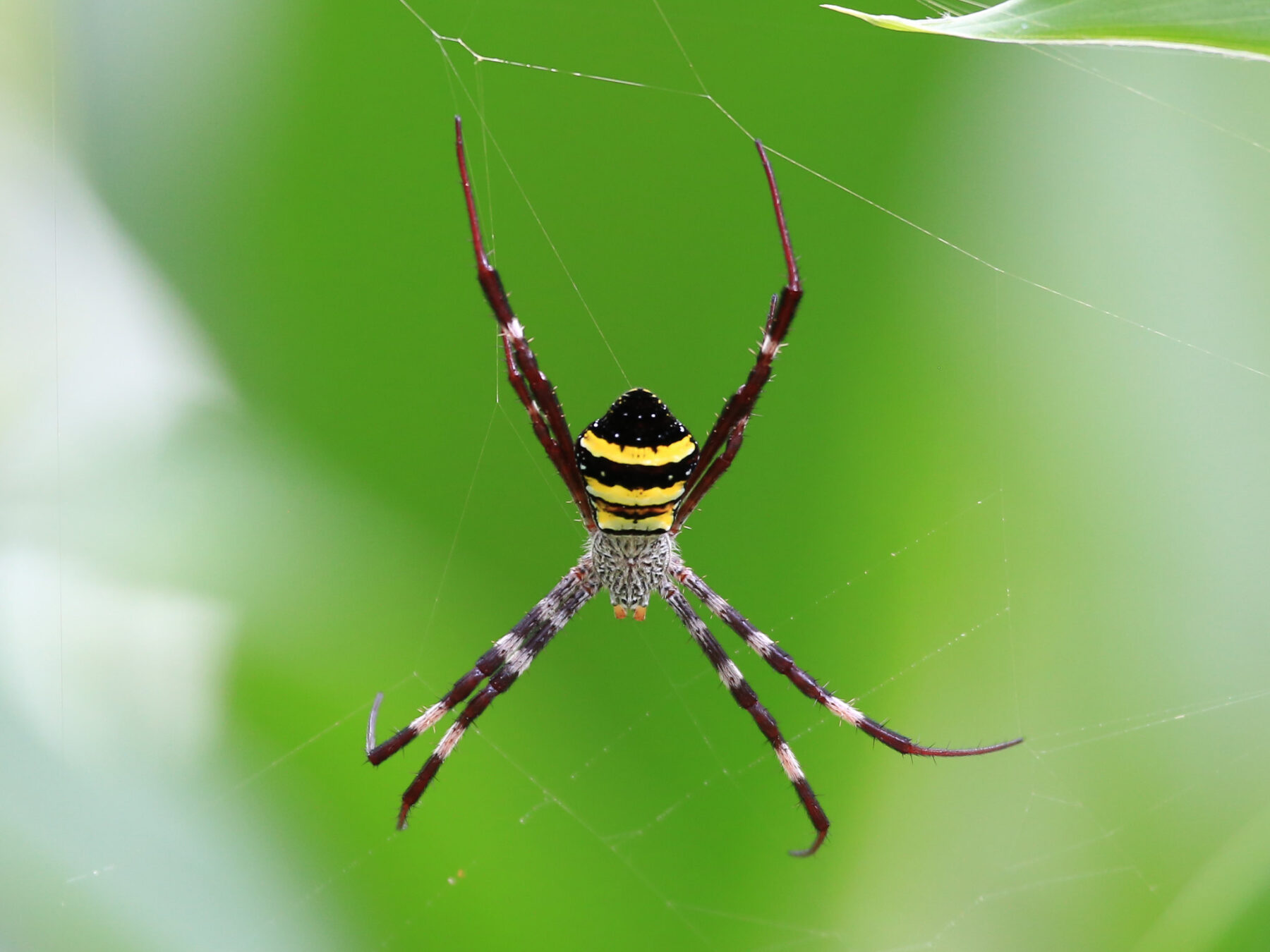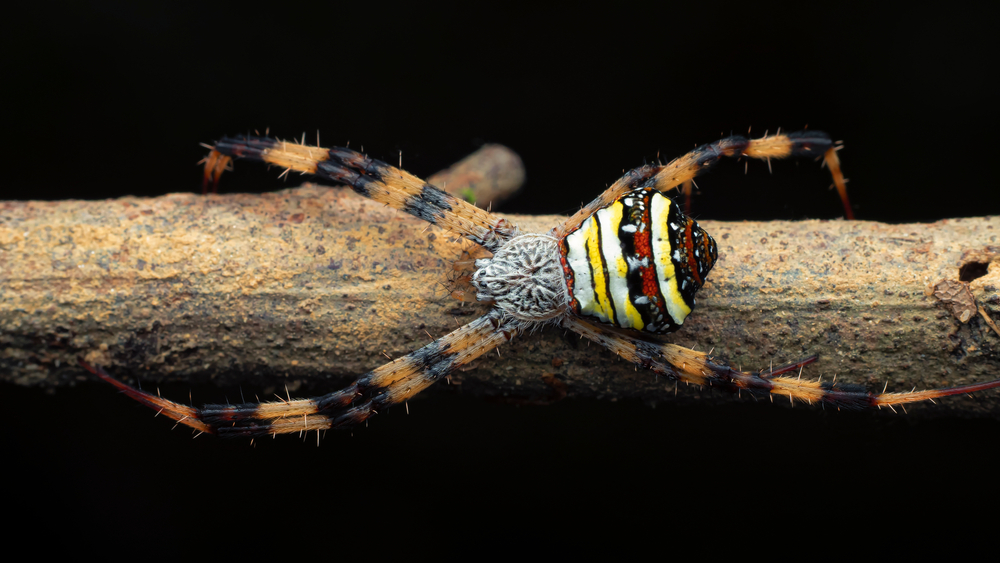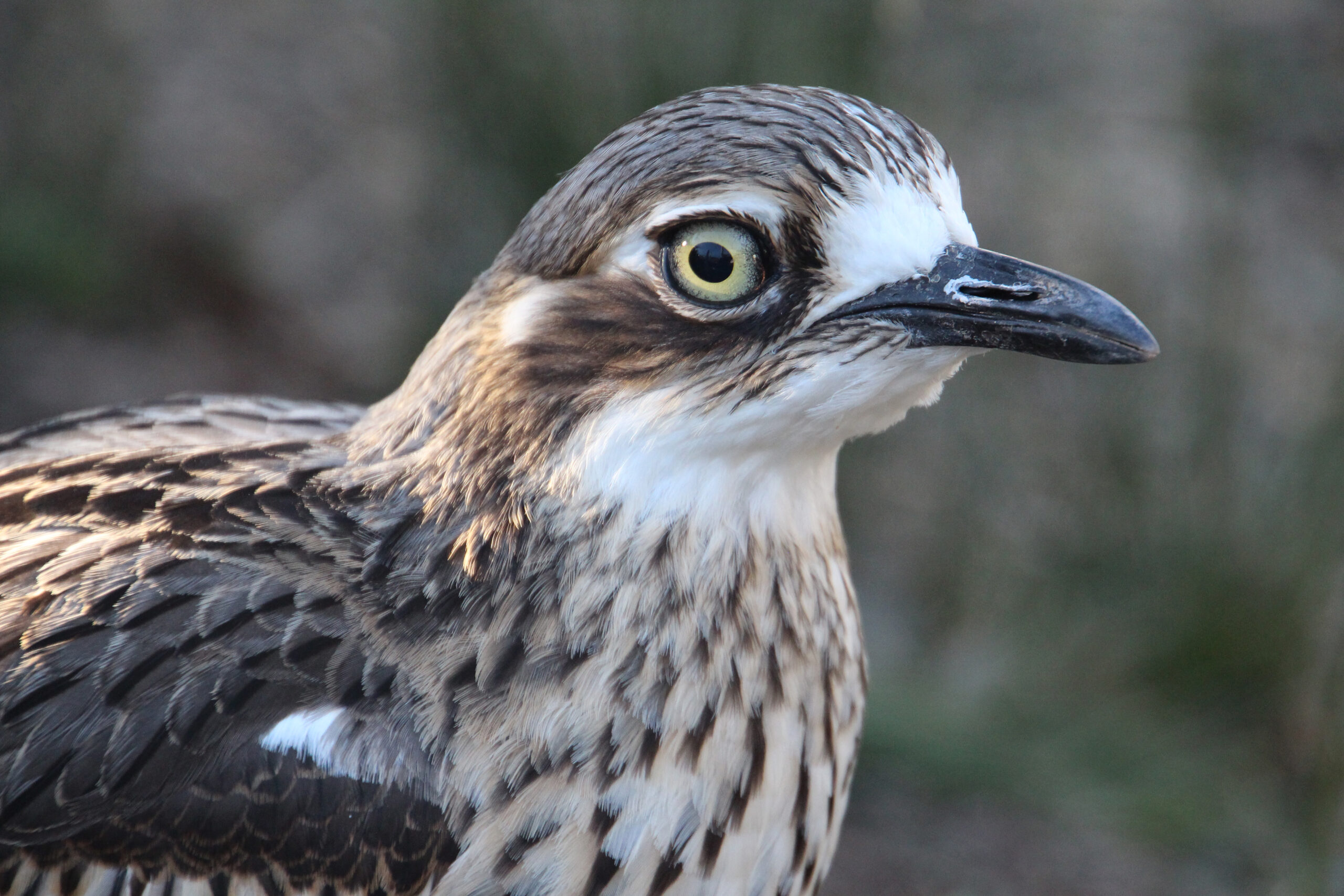| Common name | St Andrew’s cross spider |
| Scientific name | Argiope keyserlingi |
| Type | Arachnid |
| Diet | Carnivorous, eating insects including moths, flies, and butterflies |
| Average lifespan | One year |
| Size | Males 3mm- 4mm, females 10mm- 16mm |
Not one to blend into the background of its creations, the St Andrew’s cross spider is also striking in its own appearance, with bright yellow stripes across its abdomen, making it hard to miss amongst the garden foliage.
A member of the orb weaving family, the St Andrew’s cross, like its orb relatives, is known for creating circular-shaped webs. St Andrew’s cross spiderwebs are easy to spot, thanks to their X-shape within the centre which is known as a stabilimentum, there’s looking like the St Andrew’s cross on the Scottish flag.
It’s the female spider that draws admiration from onlookers, as she is larger in size and has a silvery carapace, with a yellow, black, red, and white striped abdomen with brown and black banded legs that are grouped together in pairs. Compared to the female which measures in at 16mm in length, the male is more meagre at 4mm in length and is brown and cream in colour.
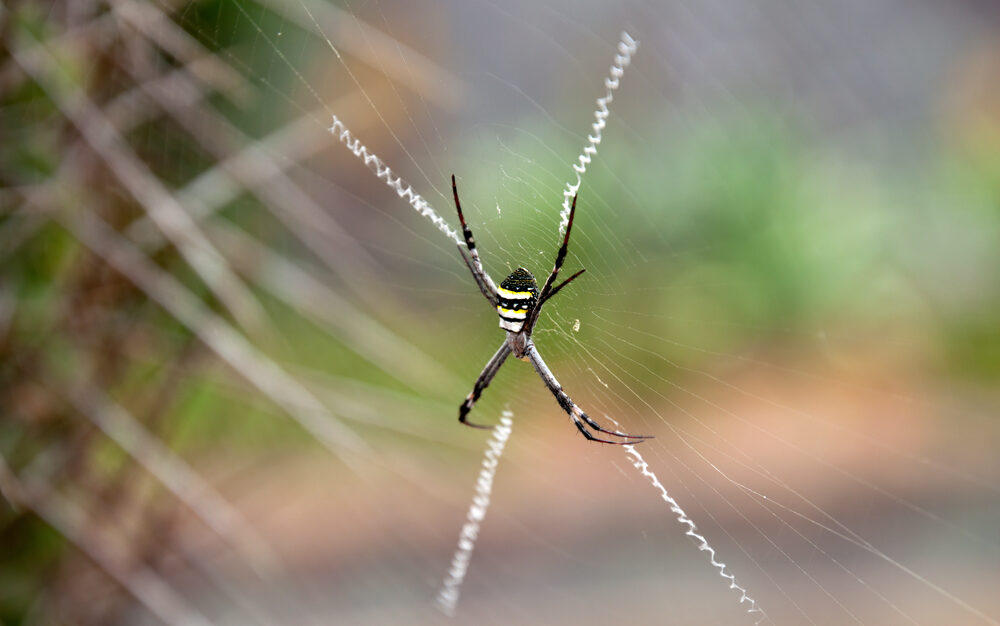
Juvenile brown and cream spiderlings begin their web designing journey by creating a circular stabilimentum that looks much like a lace doily. This web allows the spider a certain amount of camouflage as well as protection from the sun, and as the spider matures, the ‘doily’ design slowly transforms into the more well-known cross shape.
Found on the east-coast of Australia, from Queensland, throughout New South Wales and down into Victoria, St Andrew’s cross spiders inhabit backyards, shrubby bush, open forests as well as rainforest fringes.
With a web of up to one metre in diameter, these orb spiders build their home between low shrubby vegetation and occupy their creation by day and night. It isn’t clear why the St Andrew’s cross produces its unique web, but theories suggest the white silk cross pattern may deter predators as it makes the spider look bigger than it is, or alternatively, that the bluish white silk attracts flying insects into the web as it reflects ultraviolet light.
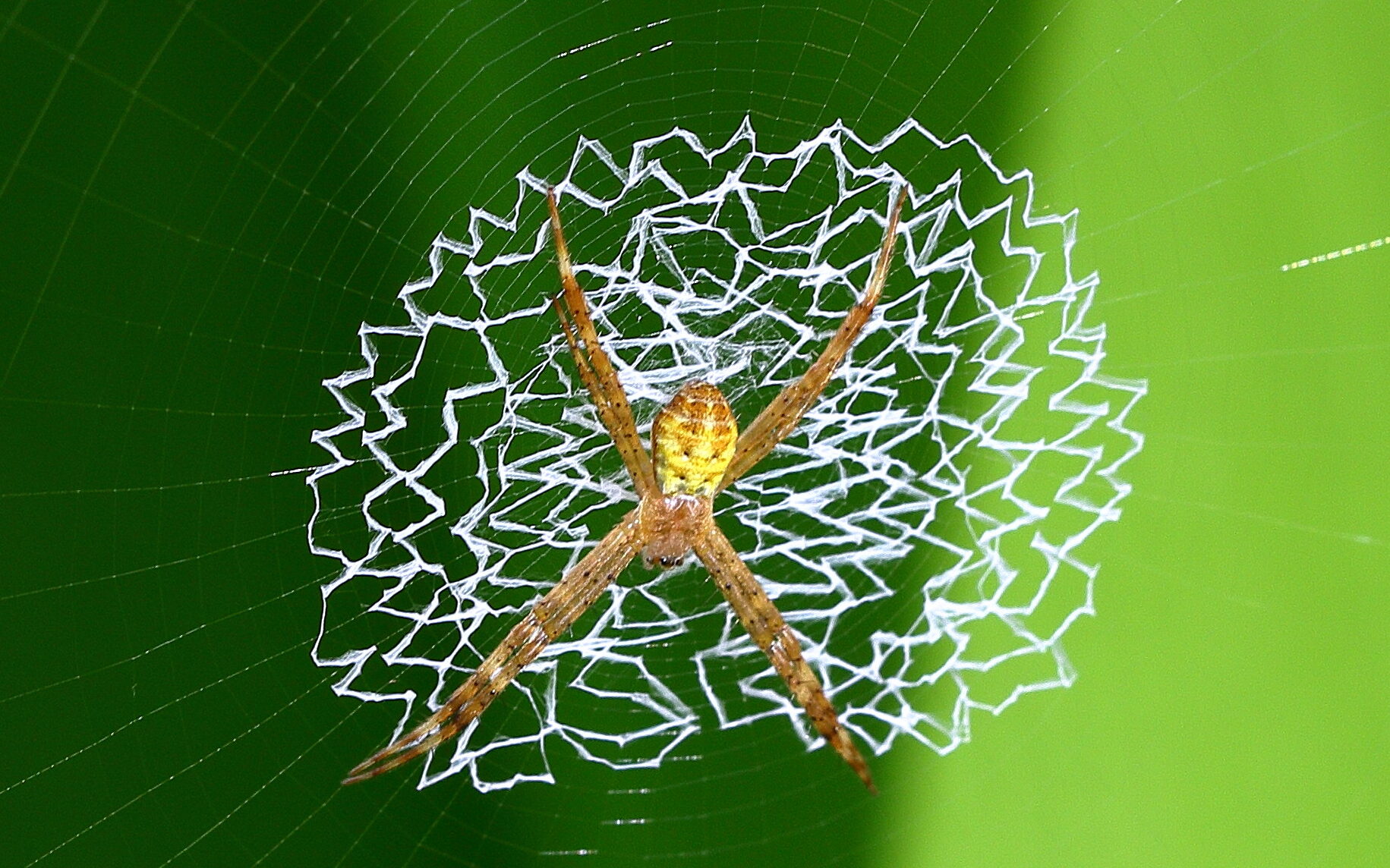
Feeding on a range of insects, St Andrew’s cross spiders secure their prey by wrapping it into a neat parcel before biting it, then digesting it, or hanging it nearby for later. Bees, bugs, butterflies, moths, crickets, and flies are all on the menu and these spiders are considered an important part of the ecosystem for controlling insect populations.
A tasty meal for wasps and birds, the St Andrew’s cross spider will either bungee from its web if it feels threatened or shake the web dramatically to create a blurry effect which may confuse would-be predators.

